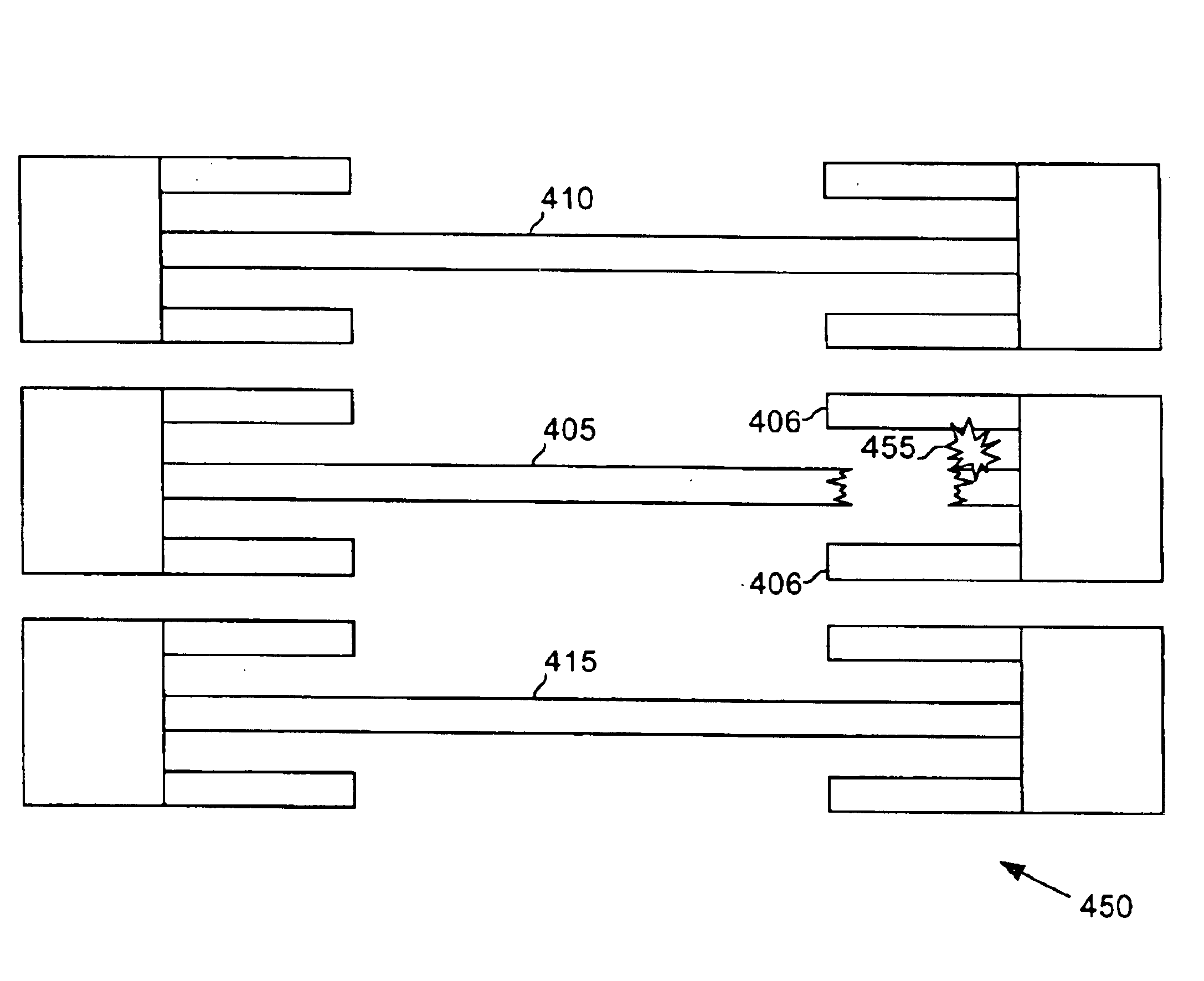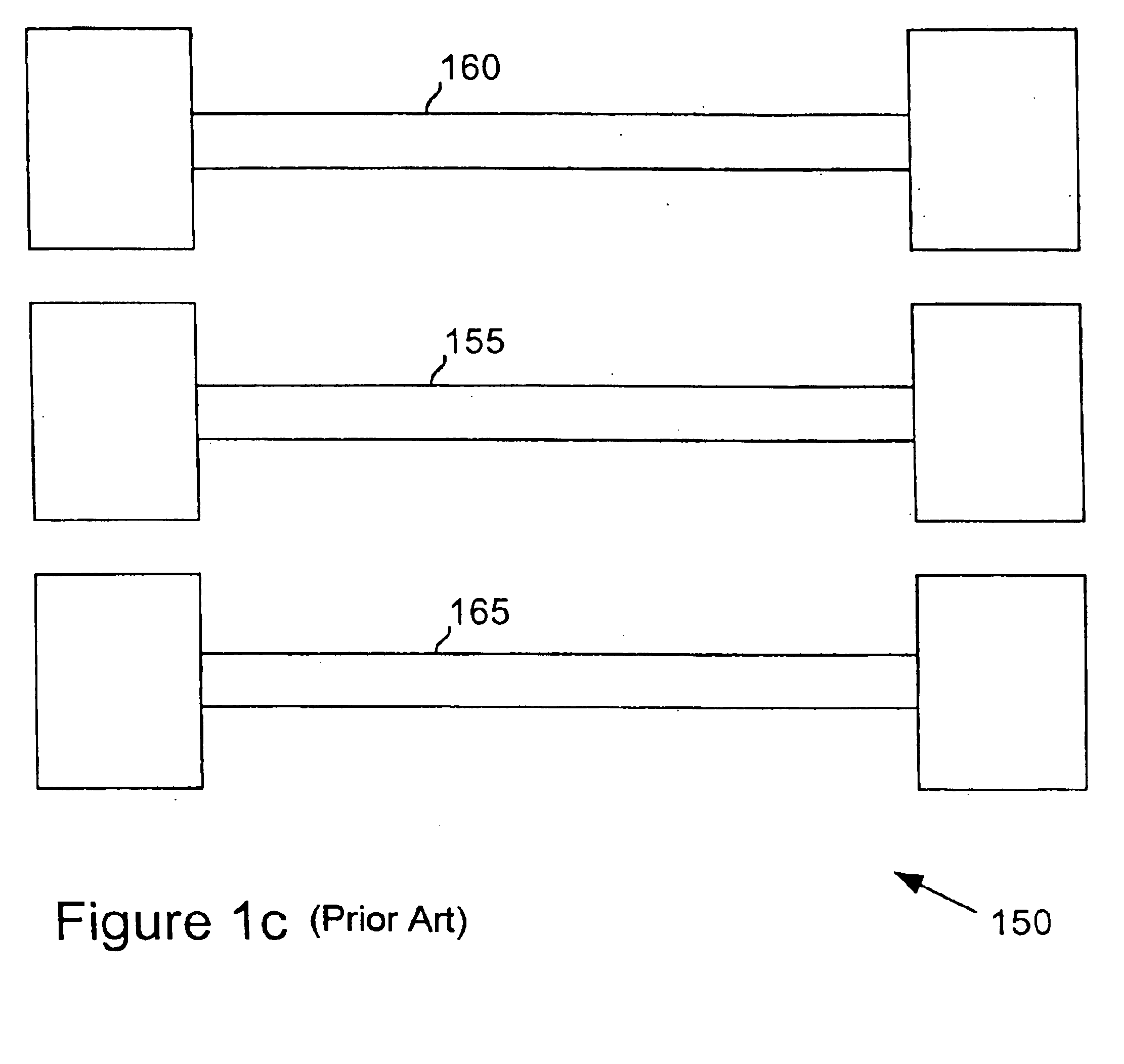Reduced splattering of unpassivated laser fuses
- Summary
- Abstract
- Description
- Claims
- Application Information
AI Technical Summary
Benefits of technology
Problems solved by technology
Method used
Image
Examples
Embodiment Construction
The making and use of the various embodiments are discussed below in detail. However, it should be appreciated that the present invention provides many applicable inventive concepts, which can be embodied in a wide variety of specific contexts. The specific embodiments discussed are merely illustrative of specific ways to make and use the invention and do not limit the scope of the invention.
Referring now to FIG. 1a, the diagram illustrates a top view of an unpassivated laser fuse 100 on a hard dielectric layer 115 which lies on top of a substrate 116 (not seen in FIG. 1a, but present in a cross-sectional view presented in FIG. 1b), As discussed previously, an unpassivated laser fuse differs from a passivated laser fuse in that it lacks a passivation layer that protects it from its environment. When compared to a passivated laser fuse, an unpassivated laser fuse requires a less powerful laser to blow its fuse. This is due to the fact that a laser does not have to first pass through ...
PUM
 Login to View More
Login to View More Abstract
Description
Claims
Application Information
 Login to View More
Login to View More - R&D
- Intellectual Property
- Life Sciences
- Materials
- Tech Scout
- Unparalleled Data Quality
- Higher Quality Content
- 60% Fewer Hallucinations
Browse by: Latest US Patents, China's latest patents, Technical Efficacy Thesaurus, Application Domain, Technology Topic, Popular Technical Reports.
© 2025 PatSnap. All rights reserved.Legal|Privacy policy|Modern Slavery Act Transparency Statement|Sitemap|About US| Contact US: help@patsnap.com



